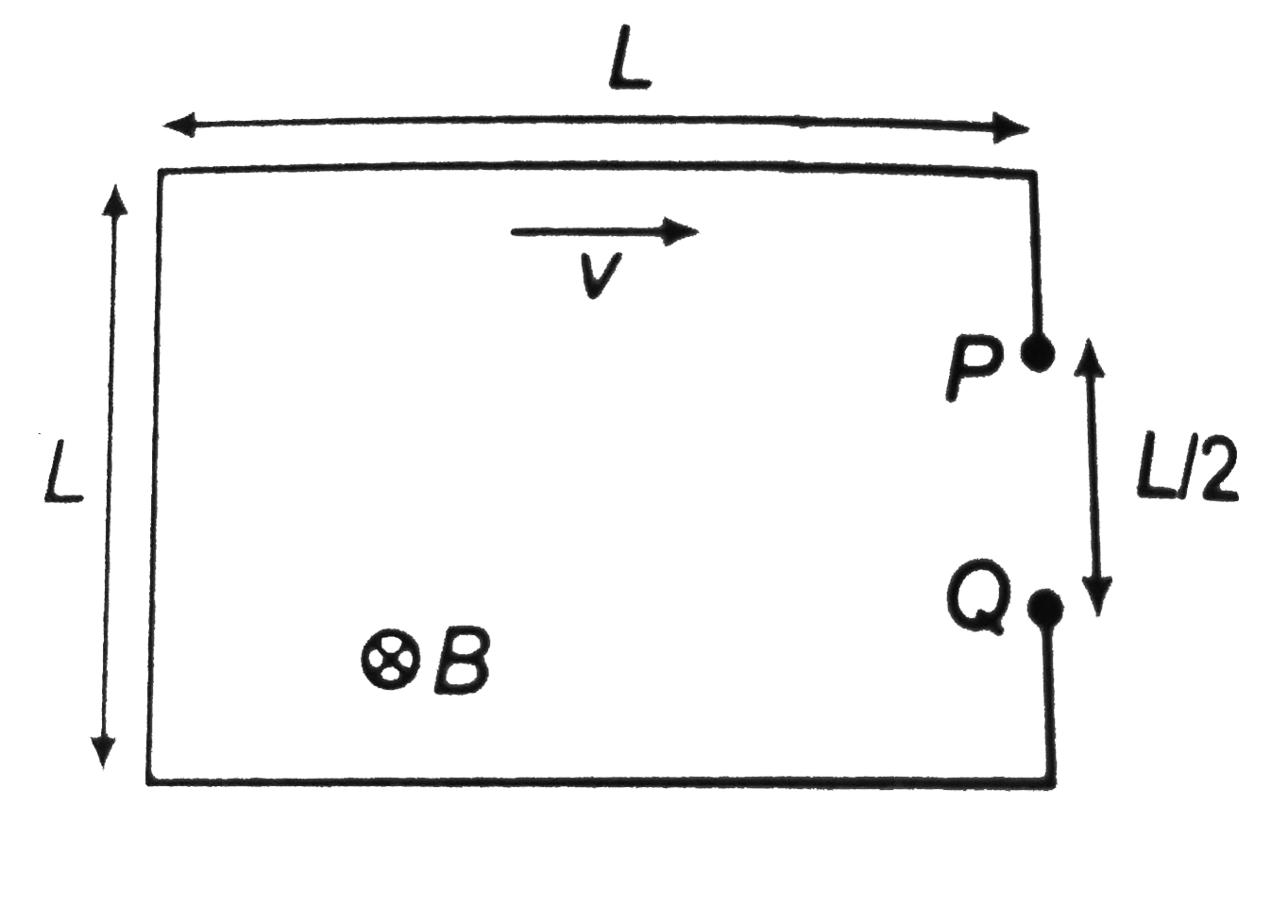Consider a metal ball of radius 'r' moving at a constant velocity 'v' in a unifrom magnetic field of induction →B. Assuming that the direction of velocity forms an angle 'a' with the direction of →B, the maximum potentail difference between points on the ball is
r∣∣→B∣∣|→v|sinα
∣∣→B∣∣|→v|sinα
2r∣∣→B∣∣|→v|sinα
2r∣∣→B∣∣|→v|cosα
The correct Answer is:C
Topper's Solved these Questions
- ELECTROMAGNETIC INDUCTIONBook:TARGET PUBLICATIONChapter:ELECTROMAGNETIC INDUCTIONExercise:EVALUATION TEST
Explore 8 Videos
- ELECTROMAGNETIC INDUCTIONBook:TARGET PUBLICATIONChapter:ELECTROMAGNETIC INDUCTIONExercise:CRITICAL THINKING
Explore 84 Videos
- ELASTICITYBook:TARGET PUBLICATIONChapter:ELASTICITYExercise:Evaluation test
Explore 14 Videos
- ELECTROSTATICSBook:TARGET PUBLICATIONChapter:ELECTROSTATICSExercise:EVALUATION TEST
Explore 14 Videos
Similar Questions
A neutral metal bare moves at a constant velocity v to the right through a region of uniform magnetic field directed out the page, as shown. Therefore,

View SolutionA circular loop of radius r moves with a constant velocity v in a region with uniform magnetic field B. Calculate the potential difference between two points (A,B), (C,D), and (E,F) located on the loop.

View Solution
Knowledge Check
A neutral metal bare moves at a constant velocity v to the right through a region of uniform magnetic field directed out the page, as shown. Therefore,
 Apositive charges accumulate to the left side and negative charges to the right side of the rodBnegative charges accumulate to the left side and positive charges to the right side of the rodCpositive charges accumulate to the top end and negative charges to the bottom end of the rodDnegative charges accumulate to the top end and positive charges to the bottom end of the rod
Apositive charges accumulate to the left side and negative charges to the right side of the rodBnegative charges accumulate to the left side and positive charges to the right side of the rodCpositive charges accumulate to the top end and negative charges to the bottom end of the rodDnegative charges accumulate to the top end and positive charges to the bottom end of the rodIf an electron is moving with velocity v produces a magnetic field →B, then
Athe direction of field →B will be same as the direction of velocity →v.Bthe direction of field →B will be opposite to the direction of velocity →v.Cthe direction of field →B will be perpendicular to the direction of velocity →v.Dthe direction of field →B does not depend upon the direction of velocity →v.If an electron is moving with velocity v produces a magnetic field →B, then
Athe direction of field →B will be same as the direction of velocity →v.Bthe direction of field →B will be opposite to the direction of velocity →v.Cthe direction of field →B will be perpendicular to the direction of velocity →v.Dthe direction of field →B does not depend upon the direction of velocity →v.
A circular loop of radius r moves with a constant velocity v in a region with uniform magnetic field B. Calculate the potential difference between two points (A,B), (C,D), and (E,F) located on the loop.

View SolutionThe loop shown moves with a velocity v in a uniform magnetic field of magnitude B, directed into the paper. The potential differene between point P and Q is e. Then

View SolutionWhen a charged particle moving with velocity →V is subjected to a magnetic field of induction →B the force on it is non-zero. This implies that:
View SolutionA charge moving with velocity v in X-direction is subjected to a field of magnetic induction in the negative X-direction. As a result, the charge will
View SolutionA wire moves with a velocity ''v'' through a magnetic field and experiences an induced charge sepration as shown. Then the direction of the magnetic field is

View Solution
